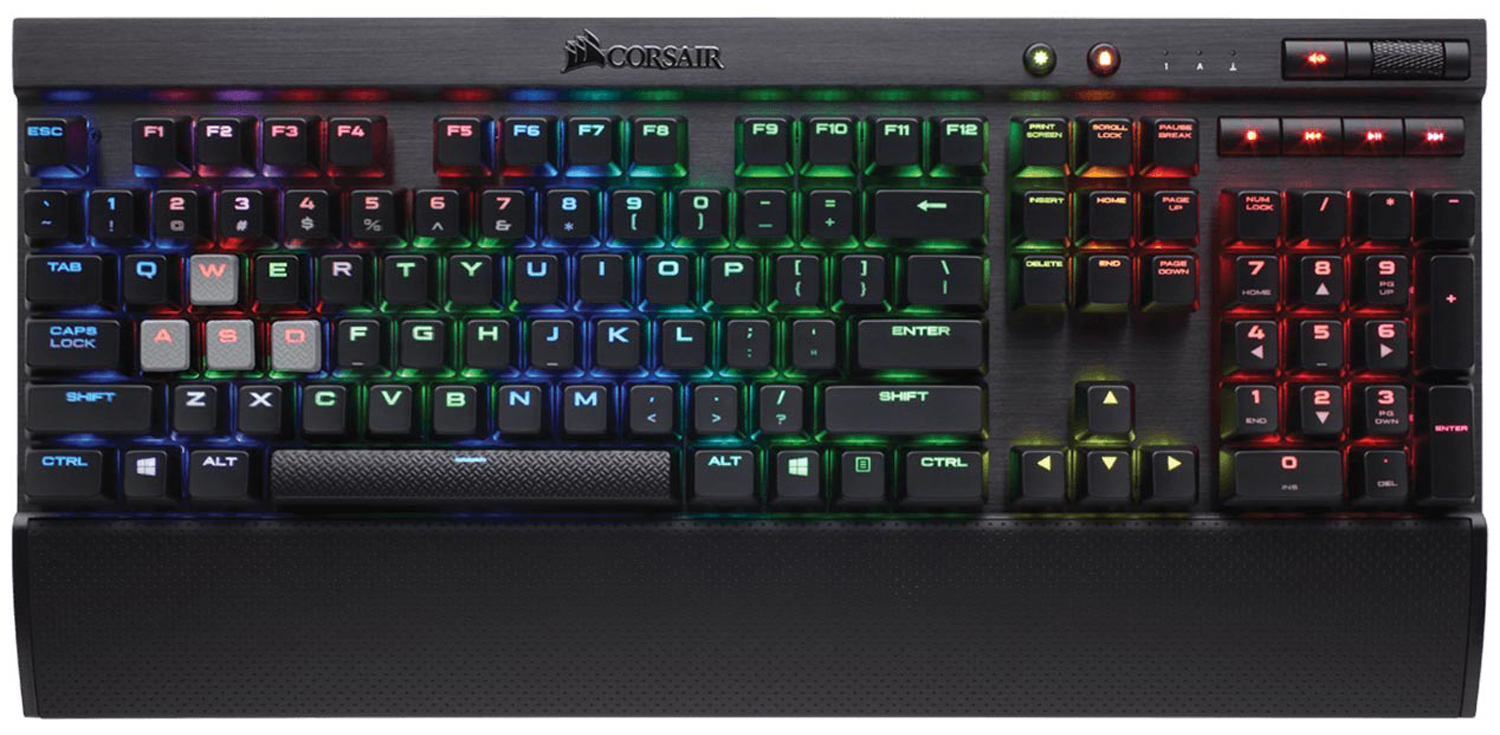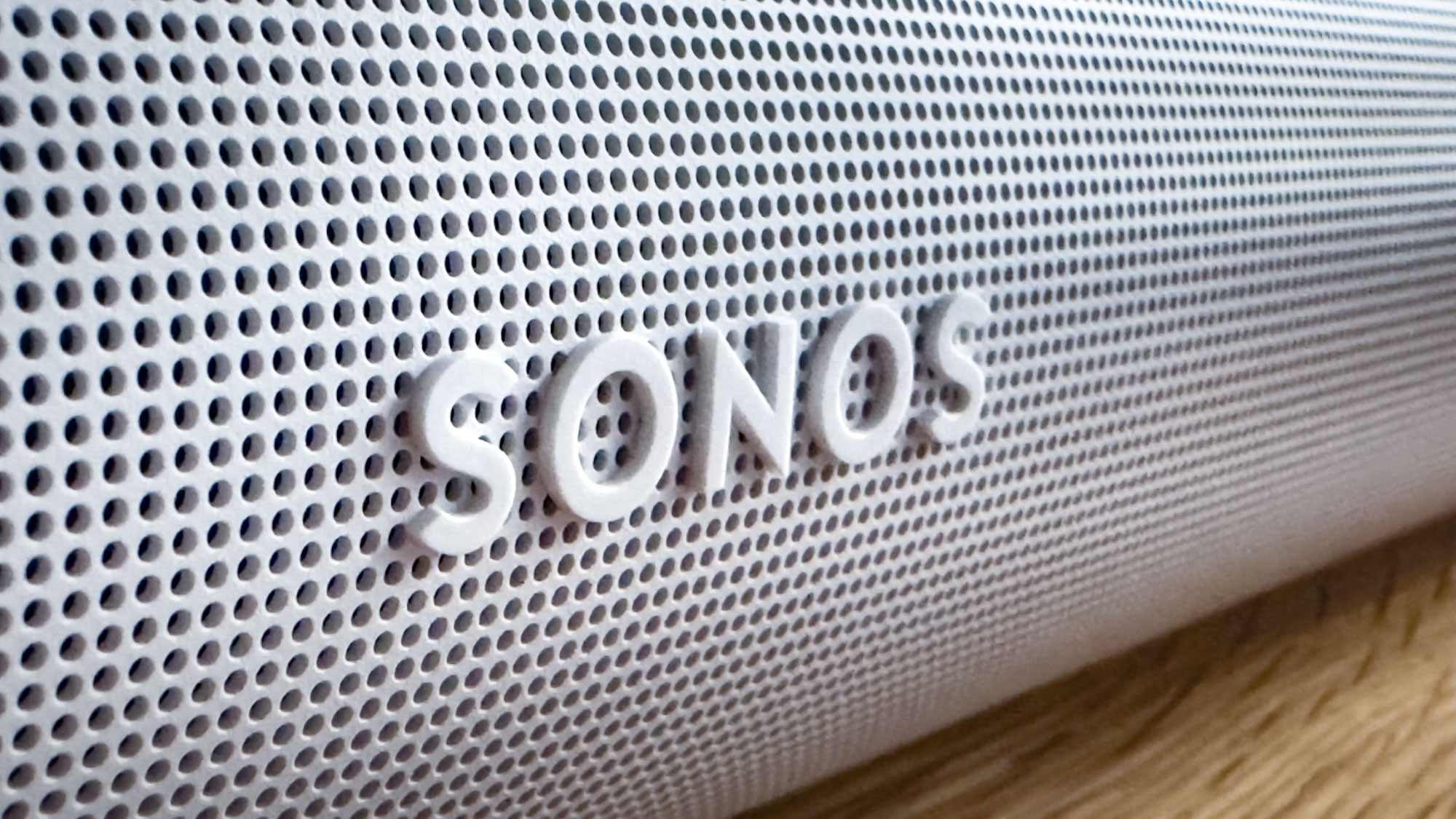Tom's Guide Verdict
The Corsair K70 RGB Rapidfire may be the most full-featured e-sports keyboard on the market, with responsive switches and amazing lighting.
Pros
- +
Authentic Cherry MX Speed switches
- +
Discrete media keys
- +
Colorful, vibrant lighting
- +
Ideal for e-sports
Cons
- -
Expensive
- -
Complex software
Why you can trust Tom's Guide
Most companies, having already created a nearly perfect gaming keyboard, would pat themselves on the back and leave well enough alone. Corsair is not most companies. When Cherry MX, purveyor of fine mechanical switches, devised its new Cherry MX Speed switch, Corsair wanted to be a part of it, and thus the Corsair K70 RGB Rapidfire ($170) was born. The Rapidfire is perhaps the most full-featured and attractive e-sports keyboard around, with responsive switches and some of the best lighting on the market.
Design
If you're familiar with the Corsair Gaming K70 RGB keyboard, you'll recognize that the Rapidfire features the same exceptional body. At 18.6 x 8.3 inches, it's not tiny, but the Rapidfire makes excellent use of its space, giving the keys some breathing room, and providing the user with a large, detachable, textured wrist rest. The keyboard is a bit bigger than the Logitech G610 Orion (17.5 x 6.0 inches) or the Razer BlackWidow (17.6 x 7.5 inches), but the extra few inches are well worth the desk real estate.
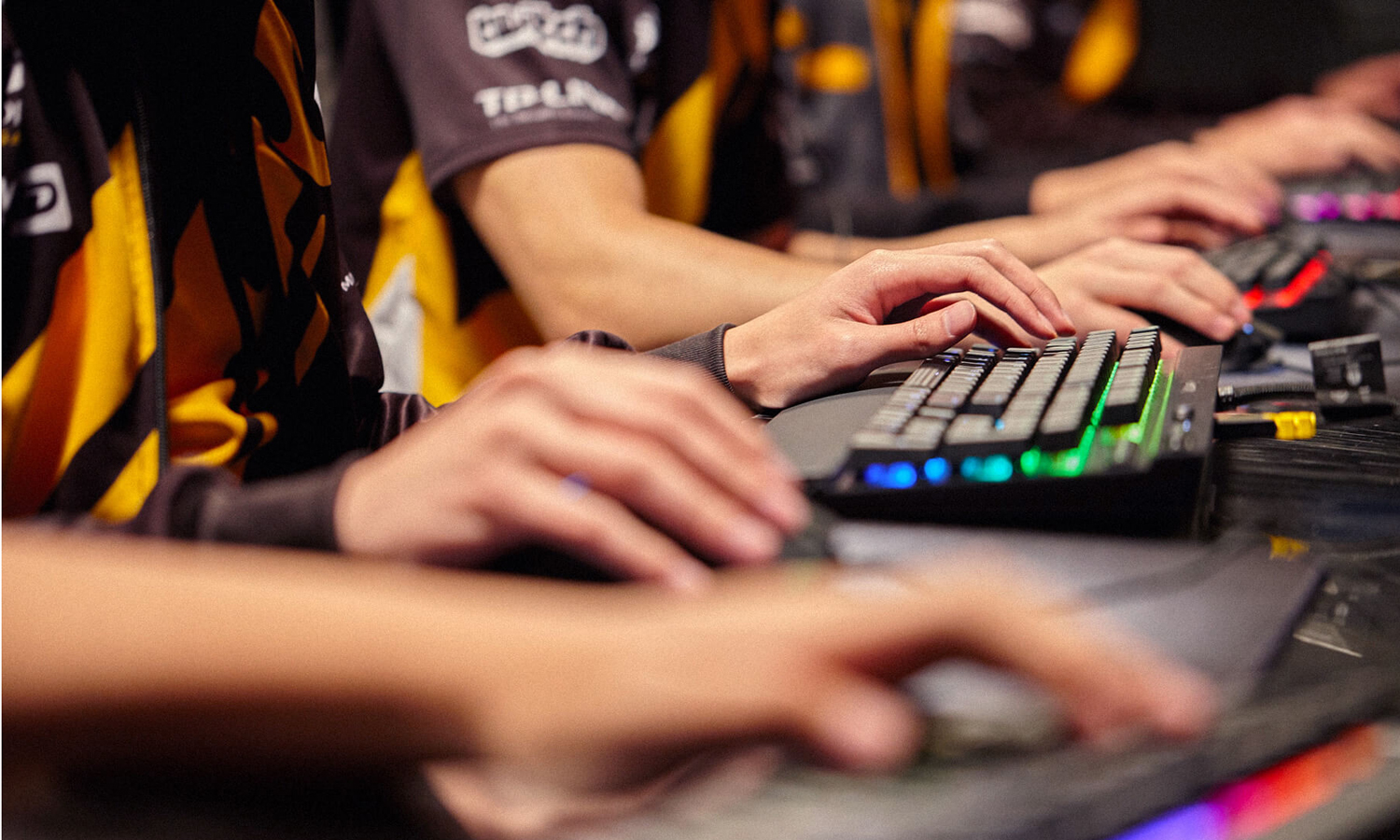
Like the standard K70 RGB, the Rapidfire features discrete media buttons and a volume rocker. There are also buttons to control backlighting brightness and to activate a "game mode," which disables keys that can potentially interrupt gameplay. So far, so good.
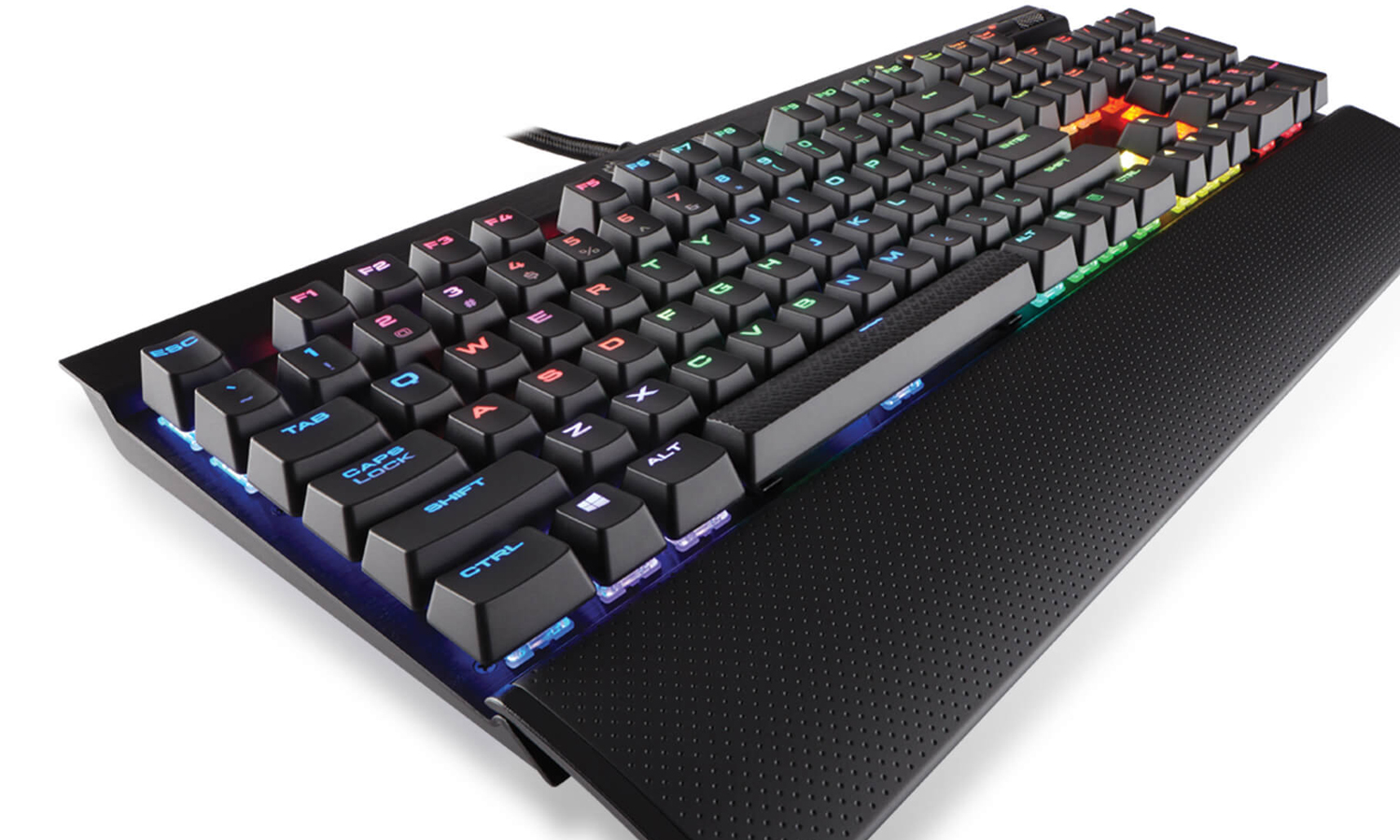
The big difference between the Rapidfire and the standard RGB is the return of the alternative textured keys. Like the earlier non-RGB K70, the Rapidfire comes with gray, textured keys for W, A, S, D and a handful of other keys that users can swap out at will. (The spacebar, which is not replaceable, is textured as well.) I adore these keys, especially because they give additional purchase for slippery fingers during heated first-person-shooter matches.
MORE: Best Mechanical and Wireless Keyboards for Gaming
Keys
Because the K70 Rapidfire is the first major gaming keyboard to feature the Cherry MX Speed keys, a review of the keyboard is, in some ways, a review of the Speed keys themselves. First and foremost, they're a delightful silver color, and feature a much shorter actuation than traditional Cherry keys (1.2 mm rather than 2 mm). They're neither noisy like Cherry Blues, nor entirely silent like Cherry Browns.
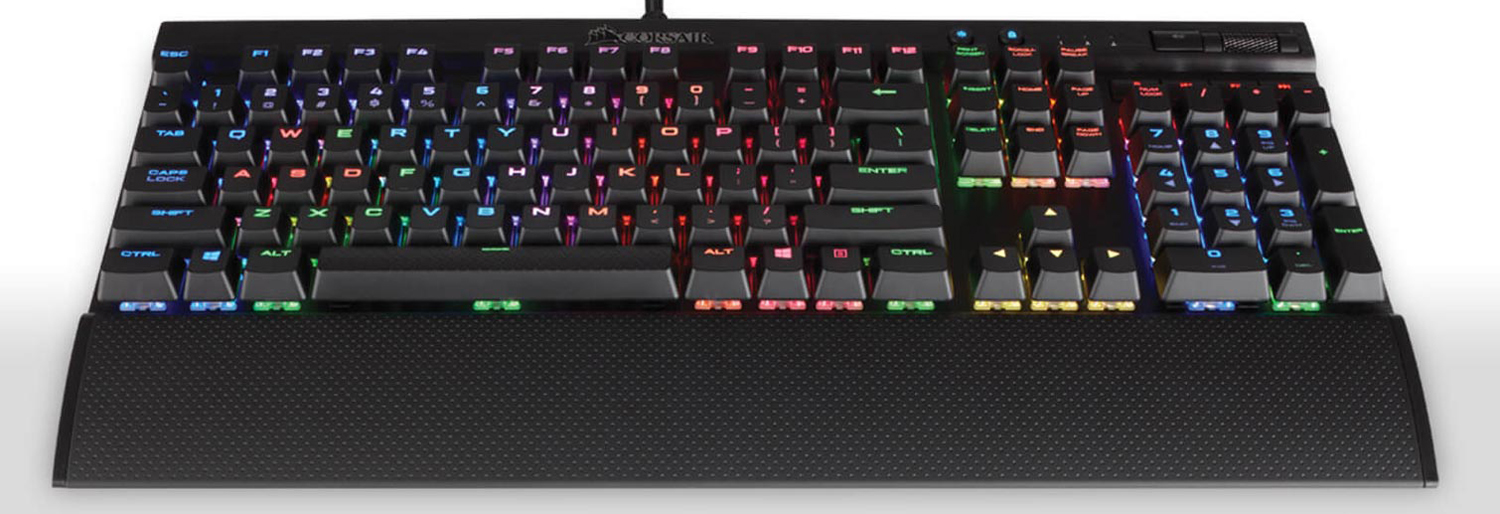
The Speed keys require only the lightest tap to activate, which is both a strength and a weakness. For twitch-based gaming, this is just what players need; for everyday typing, it can be much more imprecise than even a standard membrane keyboard. Using a Logitech G810, I scored 130 words per minute with only one error. In comparison, I typed 124 words per minute with 12 errors on the Rapidfire.
Get instant access to breaking news, the hottest reviews, great deals and helpful tips.
I would often look down from whatever game I was playing because I was simply mesmerized by how pretty the keyboard was.
The overall wpm scores don't differ much, but the difference in error rate is striking. When I said that the Speed keys require only a light touch to set them off, I wasn't kidding. I often struck letters by accident; even a finger brushing across a key with a little weight could set off a switch. While this is the kind of thing you could train yourself to live with, it will be a stark adjustment for experienced touch typists, who are used to a little more resistance.
Features
When I first looked at the Corsair Utility Engine (CUE) software, I found it amazingly detailed but somewhat unintuitive. Since then, the program has gotten a few major upgrades, and while it's just as deep as before, it's also much easier to use.
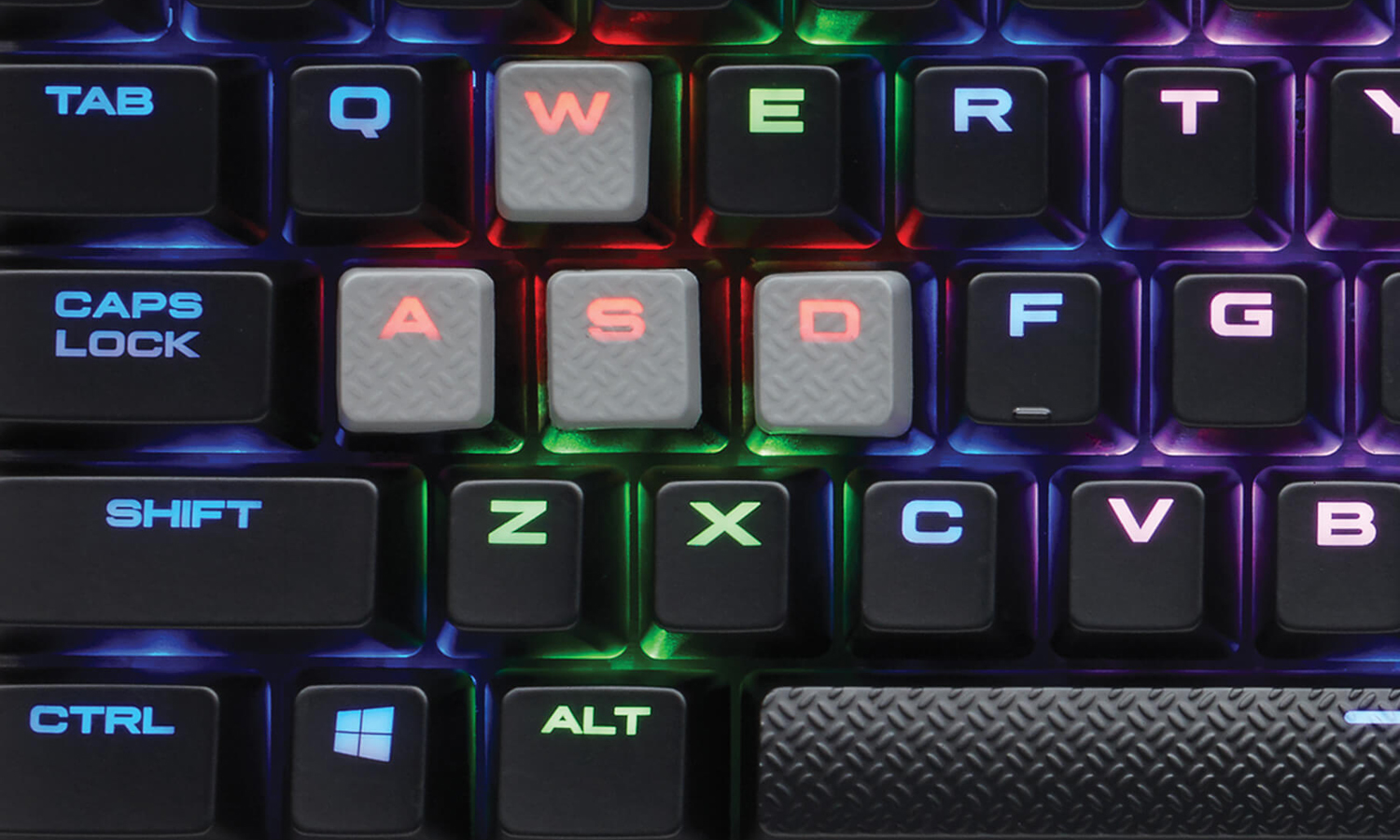
The number of things you can do with the CUE is simply staggering, as it's basically a full programming suite for lighting effects. However, the everyday user will probably just need it for reprogramming keys, making macros, linking games with keyboard profiles and, most importantly, playing with the rich illumination. It took me a few minutes to figure out how to accomplish each of these tasks, but there is a method to the CUE's madness. There's a ton of stuff to do, and you're left to figure out how much of it you want to use.
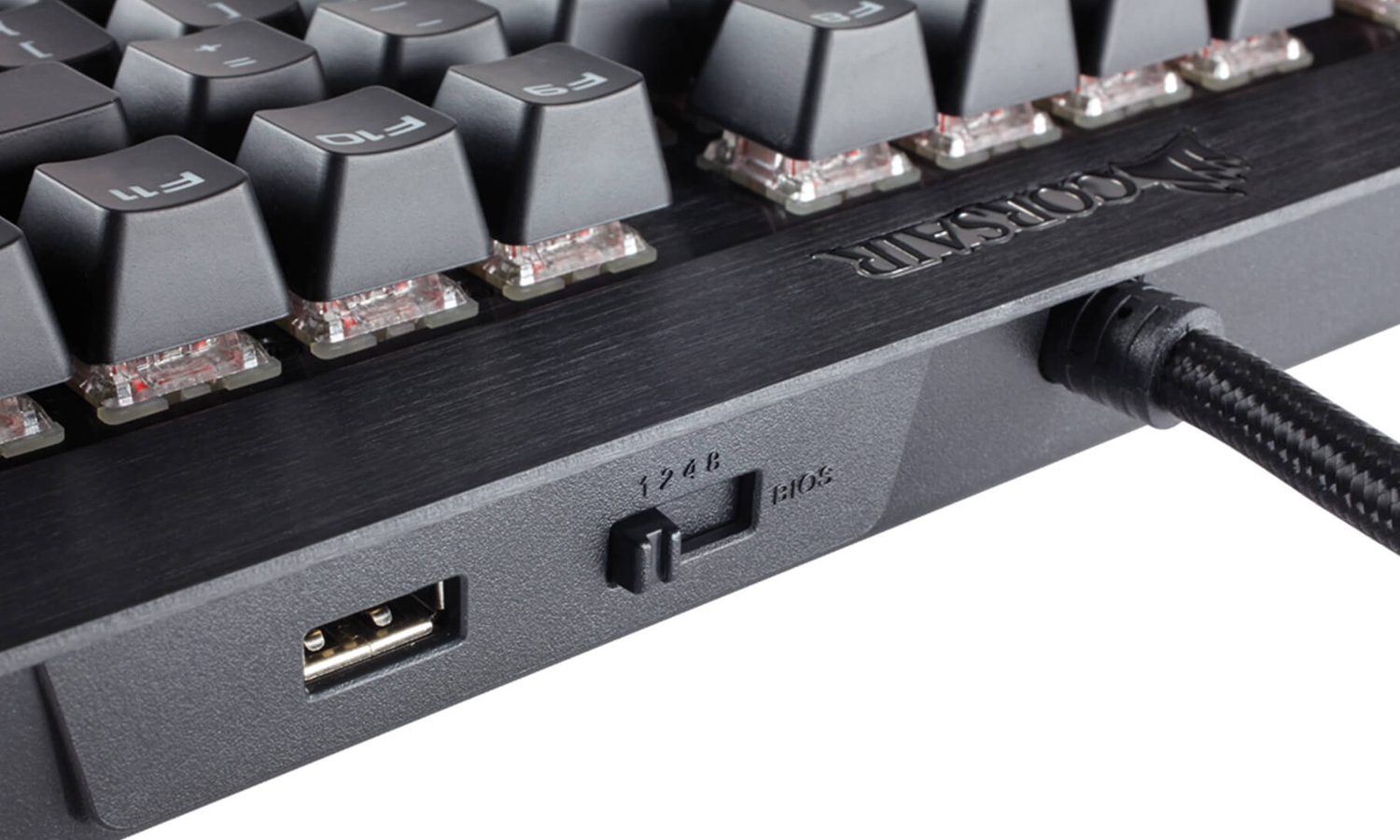
As with the original K70, the Rapidfire deserves special mention for having what is probably the deepest, richest and most vibrant RGB lighting of any keyboard I've ever seen. Purples, oranges, yellows and other colors that look drab on most other RGB keyboards do nothing to deter the Rapidfire.
The Speed keys require only the lightest tap to activate, which is both a strength and a weakness.
Corsair promised that it would add more lighting options for everyday users when the CUE first came out, and it made good on that promise. Users can select solid colors, rainbow waves and (my personal favorite) keys that send rainbow ripples throughout the peripheral with every stroke, without requiring them to have any programming knowledge whatsoever. I would often look down from whatever game I was playing because I was simply mesmerized by how pretty the keyboard was.
MORE: The Best Headsets for Immersive Gaming
Performance
Cherry MX Speed keys are built to have the fastest switches around, so how well do they work for e-sports? Those who are familiar with Cherry's sterling reputation will not be surprised to learn that the answer is "very well." I tested the keyboard with Star Wars: Battlefront, Heroes of the Storm, StarCraft II: Legacy of the Void and Rise of the Tomb Raider (for a little noncompetitive variety), and everything worked flawlessly.
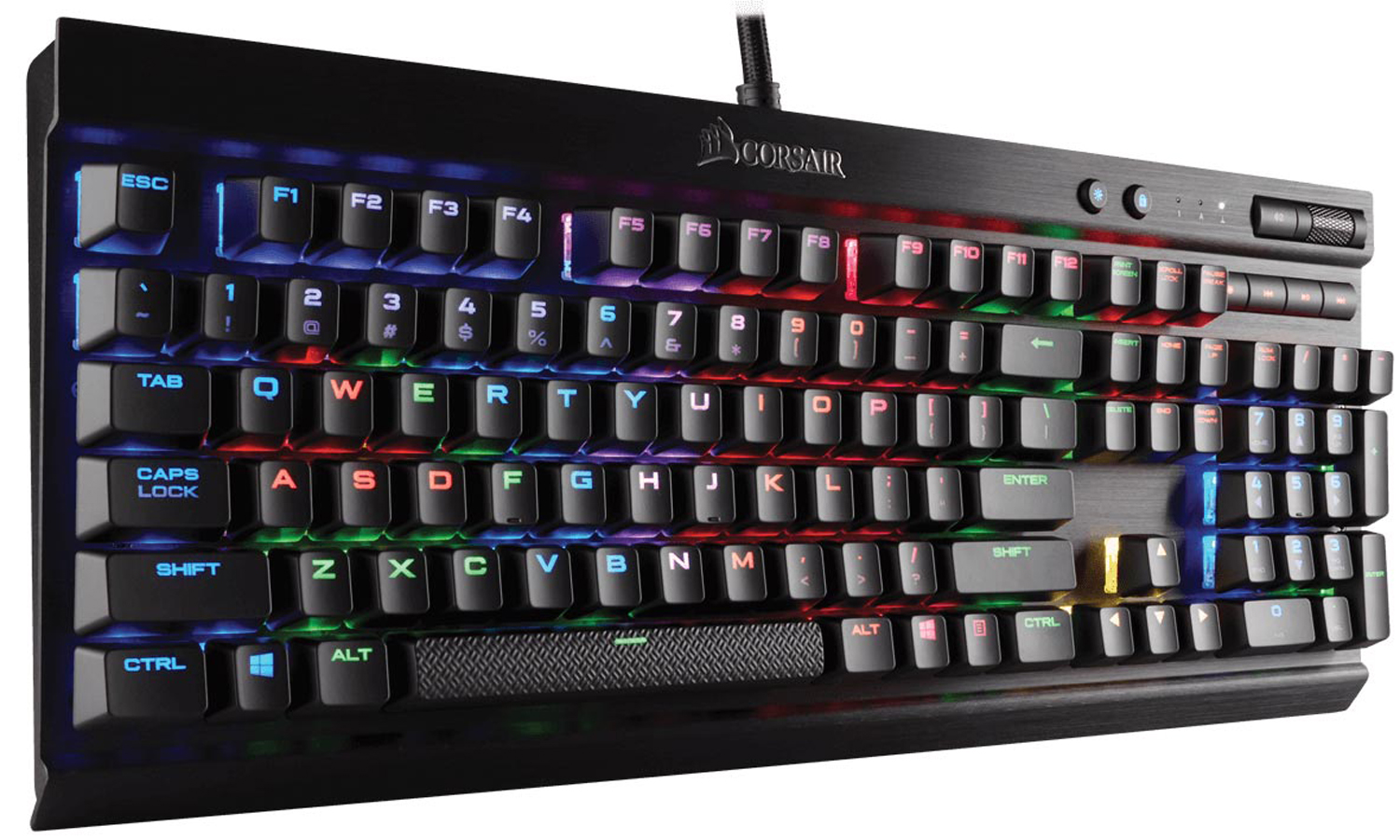
I focused particularly on Heroes of the Storm and StarCraft II, because if you're going to dish out $170 for a Cherry MX Speed keyboard, it probably won't be for single-player adventures. Heroes of the Storm felt great, as my hero responded right away to all of my commands, no matter how rapidly they came. StarCraft II was likewise a pleasure as I built up my Protoss civilization as quickly as I could.
Battlefront was likewise a joy. The textured WASD keys kept my fingers exactly where they needed to be, helping me bob and weave through intense Stormtrooper fire. Jumping, running and using special abilities happened almost instantaneously. Rise of the Tomb Raider. The bottom line is that the Rapidfire is a fine choice for both competitive and more casual play.
Bottom Line
The K70 Rapidfire is not so much a brand-new keyboard as simply another option for the already-excellent Gaming K70 . All of the strengths of the existing keyboard are there: the gorgeous illumination, the authentic Cherry keys and the sensible design. The K70's weaknesses — the lack of textured keys and the complex software — are either mitigated or gone entirely. While it may (initially) drive experienced typists up the wall, it's worth at least a look from the e-sports crowd, if not an outright purchase.

Marshall Honorof was a senior editor for Tom's Guide, overseeing the site's coverage of gaming hardware and software. He comes from a science writing background, having studied paleomammalogy, biological anthropology, and the history of science and technology. After hours, you can find him practicing taekwondo or doing deep dives on classic sci-fi.
